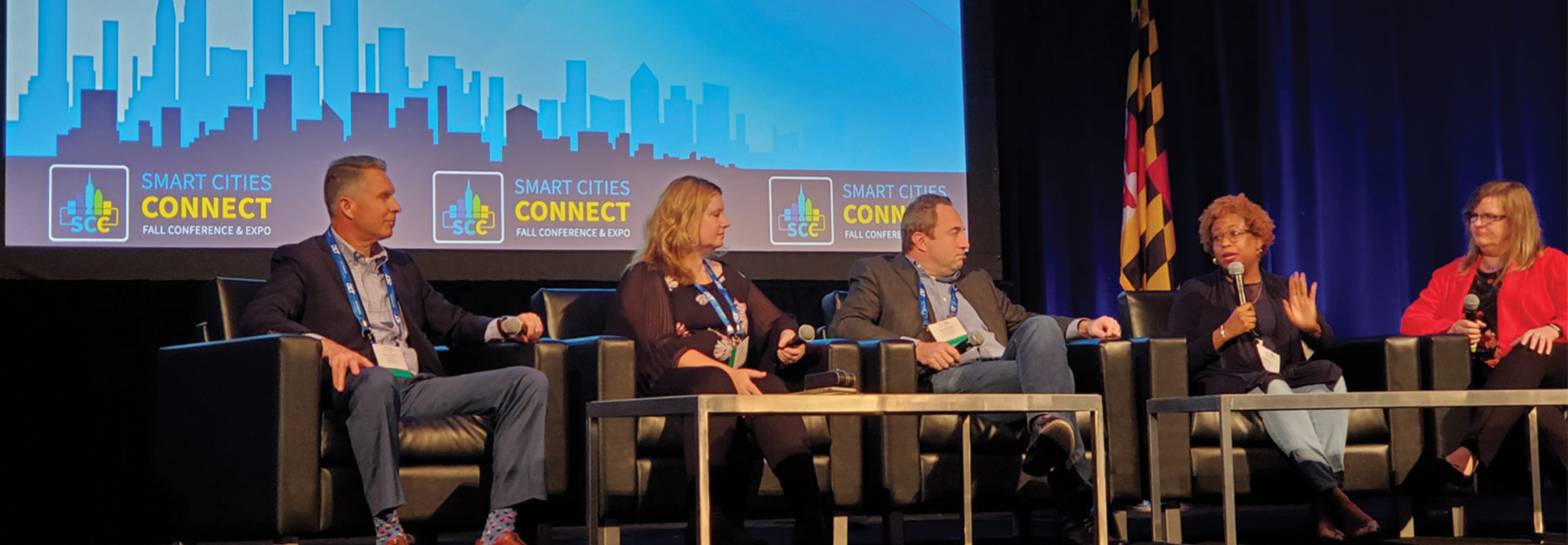What makes a smart city successful? There are likely as many answers out there as there are smart cities.
There is no one-size-fits-all definition of a smart city, said Patricia Zullo, senior director of smart city solutions for Spectrum Enterprise, an arm of Charter Communications.
“It’s unique at every place we go,” she said Wednesday, speaking at the Smart Cities Connect 2019 conference at National Harbor, Md. “The definition and initiatives use cases are unique.”
JOIN THE CONVERSATION: Follow @StateTech on Twitter for continued Smart Cities Connect 2019 conference coverage.
Although every smart city approaches technology deployments and community engagement differently, experts speaking on two keynote session panels at the conference offered some concrete best practices for success.
IT and civic leaders in smart cities should focus on cultivating public-private partnerships to bring together a variety of stakeholders, they said. Additionally, city leaders should also impress upon technology vendor partners that they need to provide solutions that actually address the individual city’s challenges and needs. Cities need to prioritize what those needs are, and the technology capabilities they need to fulfill them.
Speaking of smart cities, Aaron Deacon, managing director of Kansas City nonprofit KC Digital Drive, said that they “are kind of a new thing, kind of an old thing, and kind of the same thing we’ve been doing all along. You need relationships, structure, intentionality — and it all has to fit in with the larger vision for your city.”
Here are three best practices that smart city experts discussed.
MORE FROM STATETECH: Discover how Colorado Springs is taking its smart city journey.
1. Collaboration Is Key to Smart City Success
Zullo noted that cities that have been on a smart city journey for years now are only just starting to see the fruits of their labor when it comes to what they can do with the data they are collecting and how technology deployments can enhance economic development.
Part of the issue is that, unlike other parts of the world, U.S. cities cannot be ordered, from the top down by a national government, to carry out smart city development in a specific way.
“The U.S. in general is probably a little bit behind,” she said. It’s not for lack of trying or technology. It’s more because cities are run differently here than they are internationally. In order to get something accomplished, you need to prove something works and that you can get funding.”
Mark Patton, vice president of smart cities for the Columbus Partnership, stressed that collaboration is key between the public sector, technology providers and academics. He also suggested that cities create one location where everyone involved with smart city projects convenes and works.
With that kind of setup, he said, “you can’t go off after a tough meeting and say, ‘Those guys are a bunch of idiots.’ You have to work out the problems. Find a place to jam them all together and say, ‘Get to work.’”
Zullo said public-private partnerships can cross departmental boundaries, help bring in private funding and work with the technology industry. Cities that have set up PPPs for smart city deployments are the ones that “have the most acceleration going on,” she said.
Cities that just have a city manager, CIO or CTO working on smart city projects in his or her spare time won’t be successful, she argued. “There are too many shiny gadgets, and there’s too much going on in the city to be able to pull all this together,” she said.
2. Identify Your City’s Smart City Challenges
Kenya Asli, smart cities strategist for the city of Baltimore, said it is important for smart city leaders to assess where they are now in terms of their technology journey and challenges, and then “think through your city’s needs.”
In 2018, Baltimore released its first-ever strategic plan for IT modernization, which included plans to create a smart city council to focus on smart city strategy, partnerships, opportunities and coordination.
Knowing that Baltimore would need to partner with vendors, Asli said the city has created a challenge document organized by community, infrastructure and operations. She said that Baltimore has made it clear that technology solutions they present need to help the city meet its specific challenges.
Some of the best partnerships with technology providers have involved private sector companies saying, “Let me just lend you my expertise on this particular thing, and then later we can maybe talk about a contract,” Asli said.
MORE FROM STATETECH: See how edge computing helps smart cities with data collection and processing.
3. Identify and Prioritize the Smart City’s Needs
Charlie Nobles, vice president of sales for the utility segment at smart city Internet of Things company Ubicquia, said it’s important for city leaders to focus on their desired outcomes and then think through how technology can help get them there.
Often, he said, strategic needs lists from cities are like Christmas gift lists. “On one end you have a slingshot, on the other end you have a pony,” he said, adding that all smart city needs cannot be achieved by a single technology solution.
IoT solution providers and other vendors should help cities prioritize and characterize their needs as soon as possible, he suggested. City leaders need to create a framework that helps them determine what the most pressing needs are. Ultimately, he said, the solution “should not start with the technology,” but with the need.
Read more articles from StateTech’s coverage of the Smart Cities Connect 2019 conference.










